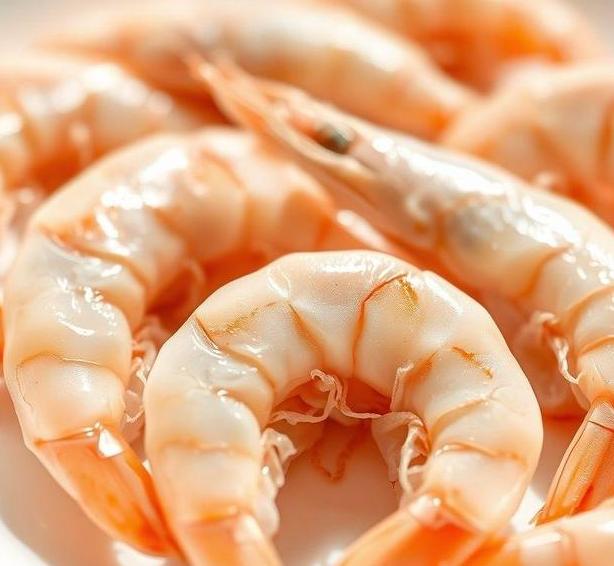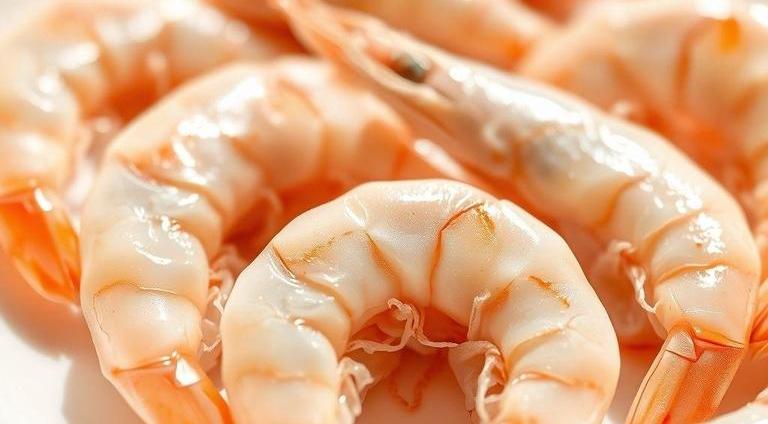Shrimp, the prized seafood beloved by so many, can elevate a simple meal to something extraordinary. Whether you’re tossing it into a fresh salad, grilling it to perfection, or making a creamy shrimp pasta, the possibilities are endless. However, when it comes to buying shrimp, particularly uncooked shrimp, it’s crucial to understand how to handle it properly to ensure it’s safe to eat and retains its optimal flavor and texture. One of the most pressing questions people have is whether uncooked shrimp can go bad and how to store it properly. In this guide, we’re diving deep into everything you need to know about uncooked shrimp’s shelf life, spoilage signs, and storage methods, so you never have to worry about serving a subpar (or worse, unsafe) dish.
Can Uncooked Shrimp Go Bad?
Yes, uncooked shrimp can definitely go bad. Like other types of seafood, shrimp is perishable and prone to bacterial growth, which can cause it to spoil quickly if not handled and stored properly. Shrimp, being high in protein and moisture, provides an ideal environment for bacteria like Vibrio or Salmonella to thrive, which is why it’s crucial to keep it cold at all times and consume it before its expiration date.
Here are some things that could lead to shrimp going bad:
- Temperature Fluctuations: Shrimp spoils quickly when exposed to temperatures that aren’t cold enough. Keeping it at room temperature for extended periods, even just an hour or two, can set the stage for bacterial growth.
- Contamination: Cross-contamination from unclean surfaces or hands can introduce bacteria that accelerate spoilage.
- Packaging Issues: If shrimp is left in compromised or damaged packaging, the air can accelerate the breakdown of the shrimp and encourage the growth of bacteria.
Shelf Life For Uncooked Shrimp

Knowing how long uncooked shrimp lasts is essential for safe consumption. While shelf life can depend on several factors, including how it’s stored and whether it’s fresh or frozen, here’s a breakdown of shrimp’s typical lifespan:
-
Fresh Shrimp (Stored In The Refrigerator)
- Fresh, uncooked shrimp usually lasts 1 to 2 days in the fridge if kept at or below 40°F (4°C).
- After purchase, it’s best to consume fresh shrimp as soon as possible to ensure maximum freshness and minimize the risk of spoilage.
- Tip: If you bought shrimp fresh but don’t plan to use it within 1 to 2 days, it’s best to freeze it to extend its shelf life.
-
Frozen Shrimp
- Frozen uncooked shrimp has a much longer shelf life. If stored properly at 0°F (-18°C) or below, frozen shrimp can last up to 6 to 12 months.
- However, for the best taste and texture, it’s ideal to use frozen shrimp within the first 3 to 6 months.
- Tip: Always store shrimp in a vacuum-sealed bag or airtight container to prevent freezer burn, which can affect flavor and texture.
-
Pre-cooked Shrimp
- If you buy pre-cooked shrimp, it should be eaten within 2-3 days when stored in the fridge.
Common Signs Of Spoilage
Spotting spoiled shrimp is crucial for avoiding foodborne illness. Shrimp may still look fine at first glance, but once it starts to go bad, you’ll notice several telltale signs. Be on the lookout for:
- Off or Sour Odor: Fresh shrimp should have a mild, ocean-like, or briny smell. If it has a strong, sour, or ammonia-like odor, it’s a clear sign that it’s spoiled. That smell is caused by bacterial growth and is a strong indicator that the shrimp is unsafe to eat.
- Discoloration: Uncooked shrimp should be translucent and white with a slightly pinkish hue (for the shelled variety). If the shrimp starts turning dull, gray, or even greenish, it’s a sign that it’s beginning to spoil.
- Slimy Texture: Fresh shrimp has a firm and slightly moist texture. If the shrimp feels slimy or sticky when you touch it, it’s a sure sign that it’s gone bad. This sliminess is often a result of bacterial activity.
- Curling or Shriveling: If shrimp appears overly curled or shriveled, it could be a sign of improper storage or that it’s aged. When shrimp starts drying out or shrinking, it’s no longer fresh.
- Soft Shell: For shrimp with shells, the shells should feel firm and intact. If the shells feel soft or mushy, that’s another indication that the shrimp has spoiled.
How To Store Uncooked Shrimp?

Proper storage is the key to prolonging the life of uncooked shrimp. Without the right storage methods, you risk bacterial contamination and premature spoilage. Here are the best ways to store shrimp at home:
-
Refrigeration (For Fresh Shrimp)
- Store uncooked shrimp in the coldest part of the refrigerator, typically near the back.
- Place the shrimp in an airtight container or sealable plastic bag to prevent contamination from other foods and to keep odors from spreading.
- It’s a good idea to place the shrimp on a shallow tray or bowl, and then cover it with crushed ice. This will help maintain the ideal cold temperature for longer.
-
Freezing (For Long-Term Storage)
- If you aren’t going to use fresh shrimp within 1-2 days, freezing it is the best option. Ensure that the shrimp is cleaned (peeled and deveined if necessary) and dry before freezing to prevent ice crystals from forming and affecting texture.
- Use a vacuum sealer or an airtight bag to seal the shrimp. Remove as much air as possible to prevent freezer burn. Alternatively, you can also freeze the shrimp in a single layer on a baking sheet before transferring them to a bag for storage.
-
Handling
- Avoid refreezing shrimp once it has been thawed, as this can degrade the quality of the meat and lead to potential health risks.
- When thawing frozen shrimp, do so in the refrigerator overnight or under cold running water to maintain proper safety.
Expert Tips
Here are some tips from experts on handling and storing uncooked shrimp:
- Buy Shrimp That’s Still Cold: When buying fresh shrimp, make sure it’s cold to the touch. If it’s warm or sitting out at room temperature, it’s likely been out too long, and it may not be safe to eat.
- Shell It Yourself: If you can, buy shrimp with the shells on. The shells help protect the shrimp and extend its shelf life. Once you peel the shrimp, it’s best to cook it immediately or freeze it.
- Don’t Leave It Out Too Long: Never leave uncooked shrimp out for more than 2 hours at room temperature, and if the temperature is above 90°F (32°C), it should only be out for 1 hour at most. Bacteria grow rapidly between 40°F and 140°F.
- Use Shrimp Quickly After Thawing: If you’ve frozen shrimp and you decide to thaw it, use it within 24 hours. Once thawed, it should not be refrozen.
FAQs
Can Uncooked Shrimp Go Bad In The Fridge?
Yes, uncooked shrimp can go bad in the fridge. It typically lasts 1-2 days in the refrigerator when stored properly. To maximize freshness, keep shrimp in an airtight container or wrap it tightly in plastic wrap and store it on the coldest shelf of the fridge.
How Long Can Uncooked Shrimp Last In The Fridge Before Going Bad?
Uncooked shrimp generally lasts for about 1-2 days in the refrigerator. After this period, its quality may deteriorate, and there is a higher risk of bacterial growth, which can cause foodborne illness.
What Are The Signs That Uncooked Shrimp Has Gone Bad?
Shrimp that has gone bad may develop a strong, sour, or ammonia-like odor. The texture may become slimy, and the shrimp might appear discolored, turning a grayish or yellowish hue instead of its usual translucent or pinkish color.
Can You Freeze Uncooked Shrimp To Prevent It From Going Bad?
Yes, freezing uncooked shrimp is an effective way to prevent it from going bad. Shrimp can be stored in the freezer for up to 6-12 months, although for optimal quality, it is best to use it within 3-6 months.
How Should Uncooked Shrimp Be Stored To Prevent It From Going Bad?
Uncooked shrimp should be stored in the coldest part of the fridge, preferably in a sealed container or tightly wrapped in plastic wrap. To prevent freezer burn, shrimp should be placed in an airtight bag or container when frozen.
Is It Safe To Eat Uncooked Shrimp After It Has Been Left Out For A Few Hours?
No, it is not safe to eat uncooked shrimp that has been left out at room temperature for more than 2 hours. Bacteria can rapidly multiply at temperatures between 40°F and 140°F, which can cause foodborne illness.
What Temperature Should Uncooked Shrimp Be Stored At To Prevent It From Going Bad?
Uncooked shrimp should be stored at temperatures below 40°F (4°C) in the refrigerator. When frozen, the shrimp should be kept at 0°F (-18°C) or lower to ensure long-term freshness and prevent spoilage.
Can Uncooked Shrimp Go Bad Even If It’s Been Frozen?
While freezing uncooked shrimp greatly extends its shelf life, it can still go bad if not stored properly. If the shrimp has been exposed to air or freezer burn, it may lose quality and develop off-flavors, though it won’t necessarily be unsafe to eat.
Can Uncooked Shrimp Be Thawed And Refrozen?
It is generally not recommended to thaw and refreeze uncooked shrimp. Refreezing can compromise the texture and quality of the shrimp. If you must refreeze, ensure that the shrimp has been thawed in the refrigerator and is not left at room temperature for extended periods.
Can Uncooked Shrimp Cause Food Poisoning If It Goes Bad?
Yes, if uncooked shrimp goes bad, it can harbor harmful bacteria like Vibrio, Salmonella, or E. coli, which can cause food poisoning. Symptoms of foodborne illness include nausea, vomiting, diarrhea, and abdominal pain. Proper handling and storage of shrimp are crucial to avoid contamination.